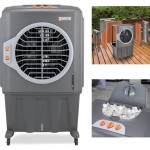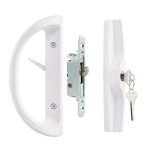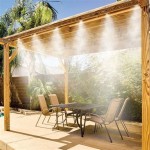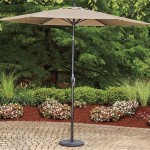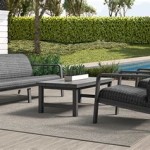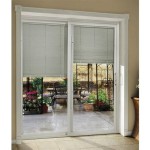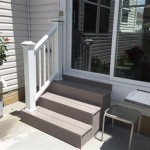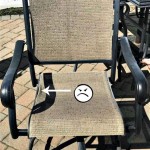Hooks To Hang Patio Lights: A Comprehensive Guide
Enhancing outdoor spaces with string lights is a popular method for creating ambiance and extending the usability of patios, decks, and gardens into the evening hours. Successfully installing these lights requires careful planning and the selection of appropriate hardware, chief among which are the hooks used to suspend the light strands. Choosing the right hooks is crucial for both aesthetic appeal and the structural integrity of the installation, ensuring that the lights are securely and safely supported. The market offers a variety of hook types, each with its own advantages and disadvantages depending on the specific application and environmental conditions.
This article provides a detailed overview of the various types of hooks available for hanging patio lights, focusing on their materials, strengths, weaknesses, and ideal applications. Furthermore, it will address important considerations for installation, including spacing, load capacity, and potential environmental factors that could affect the longevity and stability of the lighting arrangement.
Understanding Hook Materials
The material composition of a hook significantly impacts its durability, weather resistance, and load-bearing capacity. Common materials include metal, plastic, and composite materials. Each offers a distinct set of properties suitable for different outdoor environments and aesthetic preferences.
Metal Hooks: Metal hooks are frequently chosen for their strength and durability. Several types of metal are used, each with its own set of characteristics:
Steel Hooks: Steel offers excellent strength and is suitable for supporting heavier light strands. However, unprotected steel is susceptible to rust. To mitigate this, steel hooks are often coated with protective finishes such as galvanization, powder coating, or paint. Galvanization involves coating the steel with a layer of zinc, providing excellent corrosion resistance. Powder coating is a durable and aesthetically pleasing finish that can withstand harsh weather conditions. Painted steel hooks are generally less expensive but may require more frequent maintenance to prevent rust. Stainless steel hooks are also available; they offer superior corrosion resistance but are typically more expensive.
Aluminum Hooks: Aluminum hooks are lightweight and naturally resistant to corrosion. They are a good choice for lighter light strands and are suitable for use in coastal areas where salt air can accelerate corrosion. Aluminum hooks are generally less strong than steel hooks, so it's important to consider the weight of the lights being supported.
Copper Hooks: Copper hooks offer a unique aesthetic and are naturally resistant to corrosion. They develop a patina over time, which can add to their visual appeal. Copper hooks are generally more expensive than steel or aluminum hooks and may not be as strong.
Plastic Hooks: Plastic hooks are lightweight, inexpensive, and resistant to corrosion. However, they are generally less strong than metal hooks and may become brittle with prolonged exposure to sunlight. Different types of plastic are used, including:
Polypropylene Hooks: Polypropylene is a durable and weather-resistant plastic that is often used for outdoor applications. Polypropylene hooks are a good choice for lightweight light strands and are available in a variety of colors.
Nylon Hooks: Nylon is a strong and flexible plastic that is resistant to abrasion and chemicals. Nylon hooks are a good choice for applications where flexibility is important.
ABS Hooks: ABS (Acrylonitrile Butadiene Styrene) is a rigid and impact-resistant plastic. ABS hooks are a good choice for applications where strength and durability are important.
Composite Hooks: Composite hooks are made from a combination of materials, such as plastic and metal. They offer a balance of strength, durability, and corrosion resistance. Composite hooks are often used in applications where both strength and weather resistance are important.
Types of Hooks and Their Applications
The design of a hook is directly related to its intended use. Different types of hooks are designed for different mounting surfaces and weight loads. Selecting the appropriate hook type is essential for a safe and aesthetically pleasing installation.
Screw-in Hooks: Screw-in hooks are designed to be screwed directly into wood or other soft materials. They are easy to install and provide a secure hold. Screw-in hooks are available in a variety of sizes and styles, including:
Eye Hooks: Eye hooks have a closed loop at the end, which is ideal for attaching light strands with wire or rope. They provide a secure and reliable attachment point.
Cup Hooks: Cup hooks have a rounded hook shape and are often used for hanging lightweight objects. They are not as strong as eye hooks but are suitable for hanging lighter light strands.
Ceiling Hooks: Ceiling hooks are designed to be screwed into ceilings or overhangs. They typically have a wider base to provide extra support.
Adhesive Hooks: Adhesive hooks are attached to surfaces using a strong adhesive. They are easy to install and do not require drilling or screwing. Adhesive hooks are a good choice for surfaces that cannot be easily drilled into, such as brick or concrete. The load capacity of adhesive hooks varies depending on the adhesive used, so it's important to choose a hook with a sufficient weight rating.
S-Hooks: S-hooks are shaped like the letter "S" and are used to connect light strands to existing structures, such as fences or railings. They are easy to install and can be quickly moved or adjusted. S-hooks are available in a variety of sizes and materials.
Carabiner Hooks: Carabiner hooks have a spring-loaded gate that allows for quick and easy attachment. They are strong and secure and are often used for hanging heavier light strands. Carabiner hooks are available in a variety of sizes and materials.
Gutter Hooks: Gutter hooks are designed to attach light strands to gutters. They are typically made of plastic or metal and have a clip or hook that attaches to the gutter. Gutter hooks are a convenient way to hang lights without having to drill into the roof or siding.
Installation Considerations: Safety and Longevity
Proper installation is critical for ensuring the safety and longevity of a patio light arrangement. Several factors should be considered when planning and executing the installation, including spacing, weight load, and weather conditions.
Spacing: The spacing between hooks should be determined by the weight and length of the light strands. Overly long spans can cause the strands to sag, putting undue stress on the hooks and potentially leading to failure. A general guideline is to space hooks every 6 to 10 feet, but this may need to be adjusted based on the specific characteristics of the light strands. Consult the manufacturer's recommendations for optimal spacing.
Weight Load: It is imperative to select hooks with a weight rating that exceeds the total weight of the light strands being supported. Overloading hooks can lead to breakage and potential safety hazards. Consider the weight of the entire light strand, including the bulbs and any additional accessories. It is generally advisable to add a safety margin to the weight rating to account for potential wind loads or other environmental factors.
Weather Conditions: Outdoor lighting installations are subject to a variety of weather conditions, including wind, rain, snow, and sunlight. Hooks should be chosen to withstand these conditions. Metal hooks should be rust-resistant or coated with a protective finish. Plastic hooks should be UV-resistant to prevent them from becoming brittle. In areas with high winds, it may be necessary to use stronger hooks or additional supports to prevent the lights from being damaged. Furthermore, consider drainage when using adhesive hooks, as prolonged exposure to moisture can weaken the adhesive bond.
Installation Techniques: Proper installation techniques are essential for ensuring the security and stability of the hooks. When using screw-in hooks, ensure that they are screwed securely into the supporting structure. If the structure is made of soft wood, it may be necessary to use pilot holes to prevent the wood from splitting. When using adhesive hooks, clean the surface thoroughly before applying the hook. Allow the adhesive to cure completely before hanging the lights. When using S-hooks or carabiner hooks, ensure that they are properly attached to both the light strand and the supporting structure. Regularly inspect the installation for any signs of wear or damage. Replace any damaged or weakened hooks immediately.
By carefully considering the material, type, and installation of hooks, homeowners can create a beautiful and safe outdoor lighting environment that enhances the enjoyment of their patios and gardens for years to come.

How To Hang Outdoor String Lights

Command Clear Outdoor Light Clips 16 20 Strips 17017clr Aw The Home

Hanging Outdoor String Lights No Drill Required Instant Transformation

How To Install Deck Lighting Using Edison Outdoor String Lights

Diy How To Hang Patio String Lights

How To Hang Outdoor String Lights Flip The Switch

Newhouse Lighting 48 Ft String Light Hanging Mounting Kit Wire Hooks Stringkit The Home

How To Hang Outdoor String Lights Video And Easy Tutorial

How To Hang Outdoor String Lights

How To Hang String Lights An Outdoor Chandelier Lindi Russ

